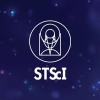


Mission Operations Center for NASA's Webb Space Telescope. Also operating the Hubble Space Telescope and upcoming Roman Space Telescope.
This profile is from a federated server and may be incomplete. Browse more on the original instance.


Mission Operations Center for NASA's Webb Space Telescope. Also operating the Hubble Space Telescope and upcoming Roman Space Telescope.
This profile is from a federated server and may be incomplete. Browse more on the original instance.